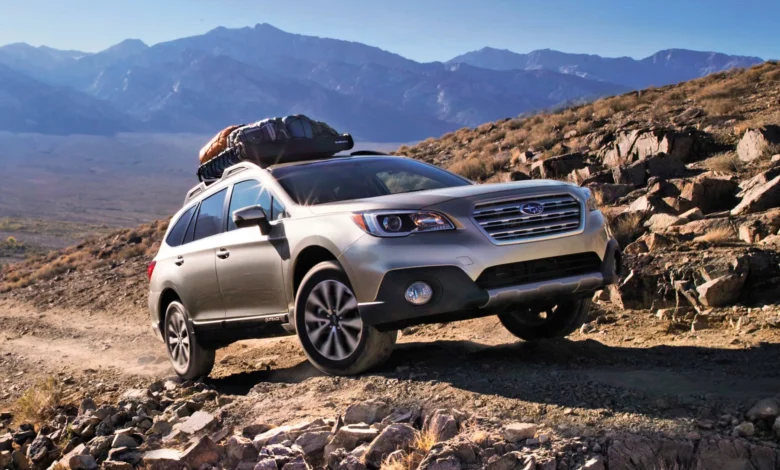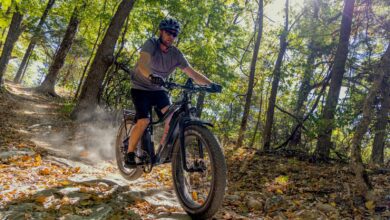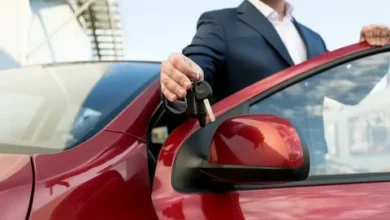How to Choose the Perfect 4WD for Your Next Outback Adventure

Planning an outback adventure is an exhilarating experience, full of anticipation and excitement. But before you pack your bags and head into the wilderness, there’s one crucial decision you need to make: choosing the right 4 wheel drive store. The Australian outback is a rugged, remote environment that demands a vehicle capable of handling everything from sand dunes to rocky trails and unpredictable weather. Here’s a comprehensive guide to help you choose the perfect 4WD for your next outback adventure.
Understand Your Needs and Itinerary
Before you even start looking at vehicles, you need to have a clear understanding of what your outback adventure will entail. Ask yourself the following questions:
- How remote is your destination? If you’re planning to venture deep into the outback, far from towns and service stations, you’ll need a vehicle with a long-range fuel tank and superior reliability.
- What kind of terrain will you encounter? Different terrains require different 4WD capabilities. Will you be driving on sandy deserts, muddy tracks, or rocky mountains?
- How many passengers and how much gear will you carry? The size and carrying capacity of the vehicle will be essential if you’re traveling with family or friends and a lot of camping gear.
- How long is your trip? Longer trips require more supplies, which means more storage space.
By understanding your specific needs, you can narrow down your options to the vehicles that will best suit your adventure.
Choose the Right Type of 4WD
4WD vehicles come in various types, each with its strengths and weaknesses. Here are the main types you should consider:
SUVs (Sport Utility Vehicles)
- Pros: SUVs are versatile and often more comfortable than other types of 4WDs. They typically have better fuel efficiency and are great for on-road driving as well as light off-roading.
- Cons: Most SUVs are not designed for extreme off-road conditions. Their off-road capability is often limited compared to more rugged 4WDs.
Utes (Utility Vehicles)
- Pros: Utes are known for their durability and ability to carry heavy loads, making them ideal for adventures that require a lot of gear. Many Utes are built with tough suspension systems, making them suitable for harsh terrains.
- Cons: Utes can be less comfortable for passengers, especially on long journeys. They often have less interior space compared to SUVs.
Dedicated Off-Roaders
- Pros: These vehicles are designed with off-roading in mind. They often come with features like differential locks, higher ground clearance, and more robust suspension systems. Examples include the Toyota Land Cruiser and Nissan Patrol.
- Cons: Dedicated off-roaders can be more expensive and less fuel-efficient. They might also sacrifice on-road comfort for off-road capability.
Key Features to Consider
Once you’ve decided on the type of 4WD, it’s time to focus on the features that will make or break your outback adventure.
Ground Clearance
Ground clearance is the distance between the lowest point of the vehicle and the ground. The higher the clearance, the better the vehicle can handle rough terrain without getting stuck or damaged. For serious off-roading, a ground clearance of at least 200mm is recommended.
4WD System
There are different types of 4WD systems:
- Full-time 4WD: Power is delivered to all four wheels at all times. This system is excellent for varied conditions but can be less fuel-efficient.
- Part-time 4WD: Allows the driver to switch between 2WD and 4WD, providing flexibility and better fuel efficiency when 4WD isn’t needed.
- AWD (All-Wheel Drive): Generally better for on-road use and light off-roading. It’s not as robust as traditional 4WD systems.
For outback adventures, a part-time 4WD system is often ideal as it gives you the control you need depending on the terrain.
Engine Power and Torque
Power and torque are critical when it comes to off-roading. You’ll need a vehicle with enough power to handle steep inclines and deep sand. Diesel engines are often preferred for outback adventures because they provide more torque at lower RPMs, which is essential for crawling over rocks or pulling through mud.
Fuel Tank Capacity
The outback is notorious for its lack of service stations. A 4WD with a large fuel tank or the ability to carry extra fuel is essential. Some vehicles come with long-range fuel tanks, but if yours doesn’t, you might consider installing one or carrying jerry cans.
Suspension
A good suspension system is crucial for handling rough terrain and ensuring a comfortable ride. Look for vehicles with independent suspension systems that can absorb the shocks of off-road driving. You might also consider after-market suspension upgrades if you plan on tackling particularly challenging trails.
Tires
The tires on your 4WD will play a significant role in its performance off-road. For outback adventures, all-terrain tires are a must. These tires provide a good balance between on-road comfort and off-road traction. In some cases, you might want to upgrade to more aggressive off-road tires if you expect particularly challenging conditions.
Recovery Points
No matter how capable your 4WD is, there’s always a chance you could get stuck. Having proper recovery points on your vehicle is essential for getting out of sticky situations. These points should be strong enough to handle the force of a tow from another vehicle or a winch.
Cargo Space and Storage Solutions
An outback adventure often means carrying a lot of gear, from tents and cooking equipment to spare parts and tools. Ensure your 4WD has enough cargo space to store everything securely. Roof racks, drawer systems, and cargo barriers are all valuable additions for maximizing storage space and keeping everything organized.
Consider Reliability and Durability
When you’re miles away from the nearest town, the last thing you want is a breakdown. Reliability is paramount when choosing a 4WD for outback adventures. Look for vehicles with a proven track record in the outback. Popular choices among seasoned adventurers include the Toyota Land Cruiser, Nissan Patrol, and Ford Ranger.
Aftermarket Support
Another factor to consider is the availability of aftermarket parts and support. Some vehicles have a larger aftermarket community, meaning it’s easier to find parts, accessories, and even advice when needed. This can be a lifesaver in remote areas where parts for less common vehicles might not be available.
Plan for Modifications and Accessories
Most 4WDs are capable out of the box, but you might want to consider a few modifications to enhance your vehicle’s performance for the outback:
- Bull bars: Protect your vehicle from animal strikes and provide a mounting point for accessories like winches and lights.
- Snorkel: Allows your engine to breathe cleaner air in dusty conditions and protects it during water crossings.
- Winch: Essential for self-recovery if you get stuck in a remote area.
- Lighting: Additional lighting is crucial for night driving in the outback, where visibility can be poor.
Test Drive and Get Expert Advice
Before making your final decision, it’s wise to test drive the vehicles you’re considering. Pay attention to how the vehicle handles on both paved roads and rough terrain. Consider renting the vehicle for a weekend trip to get a real feel for how it performs.
Don’t hesitate to seek advice from experts, such as 4WD clubs, forums, or local dealerships that specialize in off-road vehicles. They can provide valuable insights and recommendations based on real-world experience.
Budget Considerations
Your budget will play a significant role in your decision-making process. Besides the cost of the vehicle, consider the potential expenses for modifications, accessories, and ongoing maintenance. Remember that a cheaper vehicle might end up costing more in the long run if it requires frequent repairs or lacks the necessary features for outback travel.
New vs. Used
While new 4WDs come with the latest technology and warranties, used 4WDs can be a cost-effective option. However, when buying used, it’s crucial to thoroughly inspect the vehicle for any signs of wear and tear, particularly in the suspension, engine, and drivetrain components. A pre-purchase inspection by a qualified mechanic is highly recommended.
Preparing for Your Adventure
Once you’ve chosen the perfect 4WD, the next step is to prepare it for your outback adventure. Ensure you have all the necessary equipment, including spare tires, tools, and recovery gear. Familiarize yourself with your vehicle’s capabilities and practice using any new accessories, like winches or tire inflation systems, before heading out.
Safety Considerations
Safety should always be a priority. Ensure your vehicle is equipped with a first-aid kit, emergency communication devices (such as a satellite phone), and a well-stocked supply of water and food. Let someone know your travel plans and estimated return time before embarking on your journey.
Conclusion
Choosing the perfect 4WD for your outback adventure is a decision that requires careful consideration and planning. By understanding your needs, selecting the right type of vehicle, and ensuring it’s equipped with the necessary features and modifications, you’ll be well-prepared for a safe and enjoyable journey into the wild. Whether you’re a seasoned off-roader or a first-time adventurer, the right 4WD can make all the difference in ensuring your trip is both memorable and successful. So, take your time, do your research, and get ready to explore the rugged beauty of the Australian outback in the perfect 4WD.



